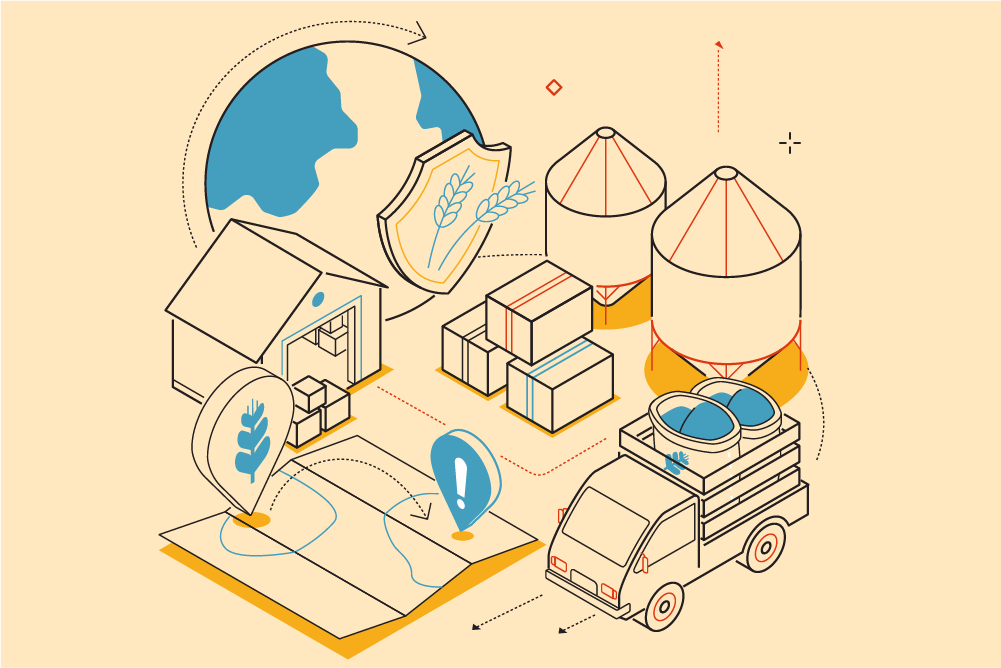How to Manufacture a Food Product: From Kitchen to Market

A Complete Guide to Food Manufacturing
Your grandmother’s secret sauce recipe has always been a hit at family gatherings.
Or maybe you’ve created a unique snack that your coworkers can’t get enough of.
Whatever your story, turning a beloved recipe into a manufactured food product requires careful planning, understanding of regulations, and strategic execution.
This guide will walk you through the essential steps of bringing your culinary creation to market.
Let’s turn your passion into a tangible product that consumers fall in love with.
Understanding Food Manufacturing: Beyond the Kitchen
Food manufacturing transforms home recipes into commercially viable products through standardization, scaling, and mechanization. This process involves more than simply multiplying ingredients—it requires careful consideration of food safety, shelf stability, packaging, and consistent quality across large batches.
But make no mistake: not everyone’s cut out to manufacture a product.
So, before you get started, ask yourself if this is actually the right path for you.
Who Should Consider Food Manufacturing?
The journey to commercial food production is best for those who tick at least 3 of the following boxes:
- Your homemade products consistently receive praise and purchase requests
- You’ve identified a gap in the market for your unique food item
- You’re passionate about sharing your culinary creation with a wider audience
- You have food industry experience and want to expand your reach
- You’ve successfully sold at farmers’ markets or local events
Research: The Foundation of Success
Market Analysis and Product Viability
Before scaling up production, thorough market research is crucial. In fact, don’t bother if you haven’t taken deliberate steps to get a realistic sense of what it’d be like bringing your product to market. Because the CPG food industry can be relentlessly cutthroat.
Take it from us… We’ve helped market dozens of food products. It’s literally our specialty.
Consider:
- Current market trends in your product category
- Similar products and their price points
- Target audience demographics and purchasing habits
- Distribution channels (retail, wholesale, direct-to-consumer)
- Geographic expansion possibilities
Understanding Your Target Audience
Identify both end consumers and potential retail partners:
- Consumer demographics and buying behaviors
- Retailer requirements and preferences
- Price sensitivity in your target market
- Competition analysis
- Distribution channel demands – including ecommerce
Financial Considerations and Planning
Initial Investment Requirements
Budget for essential expenses:
- Commercial kitchen rental or facility setup
- Equipment and tools
- Initial ingredient inventory
- Packaging materials and design
- Regulatory compliance and certifications
- Insurance coverage
- Marketing and promotional materials
Pricing Strategy Development
Calculate your pricing structure considering:
- Production costs (ingredients, labor, overhead)
- Packaging and shipping expenses
- Distribution markups
- Competitor pricing
- Market positioning
- Profit margins at different sales volumes
Navigating Federal Regulations
FDA Compliance
Understand and prepare for:
- Registration requirements
- Good Manufacturing Practices (GMPs)
- Food Safety Modernization Act (FSMA) compliance
- Hazard Analysis Critical Control Points (HACCP) planning
- Allergen control programs
- Record-keeping requirements
Labeling Requirements
Ensure compliance with:
- Nutritional facts panel requirements
- Ingredient list formatting
- Allergen declarations
- Net weight statements
- Company information display
- Claims verification and documentation
Protecting Your Recipe
Legal Protection Strategies
Safeguard your intellectual property through:
- Non-disclosure agreements with employees and partners
- Trade secret protection measures
- Trademark registration for brand elements
- Patent consideration for unique processes
- Copyright protection for packaging design
Product Development and Testing
Recipe Scaling and Standardization
Convert your home recipe to commercial scale:
- Standardize measurements and procedures
- Account for equipment differences
- Adjust for large-batch effects
- Document each step of the process
- Create quality control checkpoints
Product Testing and Validation
Conduct thorough testing:
- Shelf-life studies
- Stability testing
- Nutritional analysis
- Consumer taste tests
- Package performance testing
- Production run trials
Packaging Considerations
Safety and Functionality
Develop packaging that ensures:
- Product protection and preservation
- Temperature stability
- Moisture control
- Tamper evidence
- Easy handling and storage
- Cost-effectiveness
Visual Appeal and Branding
Create packaging that:
- Reflects your brand identity
- Stands out on retail shelves
- Communicates product benefits
- Meets retailer requirements
- Facilitates easy stocking and display
Marketing Your Food Product
Brand Development
Establish a strong brand presence:
- Develop your unique selling proposition
- Create compelling brand storytelling
- Design consistent visual elements
- Build brand guidelines
- Plan social media strategy
Sales and Distribution Strategy
Plan your go-to-market approach:
- Direct-to-consumer sales channels
- Retail partnerships
- Online marketplace presence
- Food service distribution
- Marketing materials and support
- Sales team training
Digital Presence and Promotion
Build your online presence:
- Website development
- Social media marketing
- Email marketing campaigns
- SMS/WhatsApp marketing campaigns
- Influencer partnerships
- Content marketing strategy
- Online advertising
Getting Started: Your Action Plan
- Initial Assessment (1-2 months)
- Conduct market research
- Develop business plan
- Begin recipe standardization
- Preparation Phase (2-3 months)
- Secure funding
- Begin FDA registration process
- Identify production facility options
- Development Phase (3-4 months)
- Complete product testing
- Finalize packaging design
- Establish production procedures
- Launch Preparation (2-3 months)
- Build marketing materials
- Secure initial retail commitments
- Plan launch event or strategy
Your CPG Food Product: From Dream to Reality
Manufacturing a food product requires careful planning, attention to detail, and patience.
While the process may seem daunting, breaking it down into manageable steps makes it achievable. Remember that many successful food brands started in home kitchens—yours could be next.
Success in food manufacturing comes from balancing creativity with compliance, quality with efficiency, and passion with practicality. By following this guide and working with experienced professionals when needed, you can transform your culinary creation into a successful commercial product.
Don’t forget that this journey is a marathon, not a sprint. Be patient (seriously).
Take time to do things right, learn from each step, and build a strong foundation for your food manufacturing business.
With dedication, proper planning, and attention to detail, you can successfully bring your product from your kitchen to store shelves at Whole Foods, Walmart, Costco and everywhere else CPG food products are sold.


